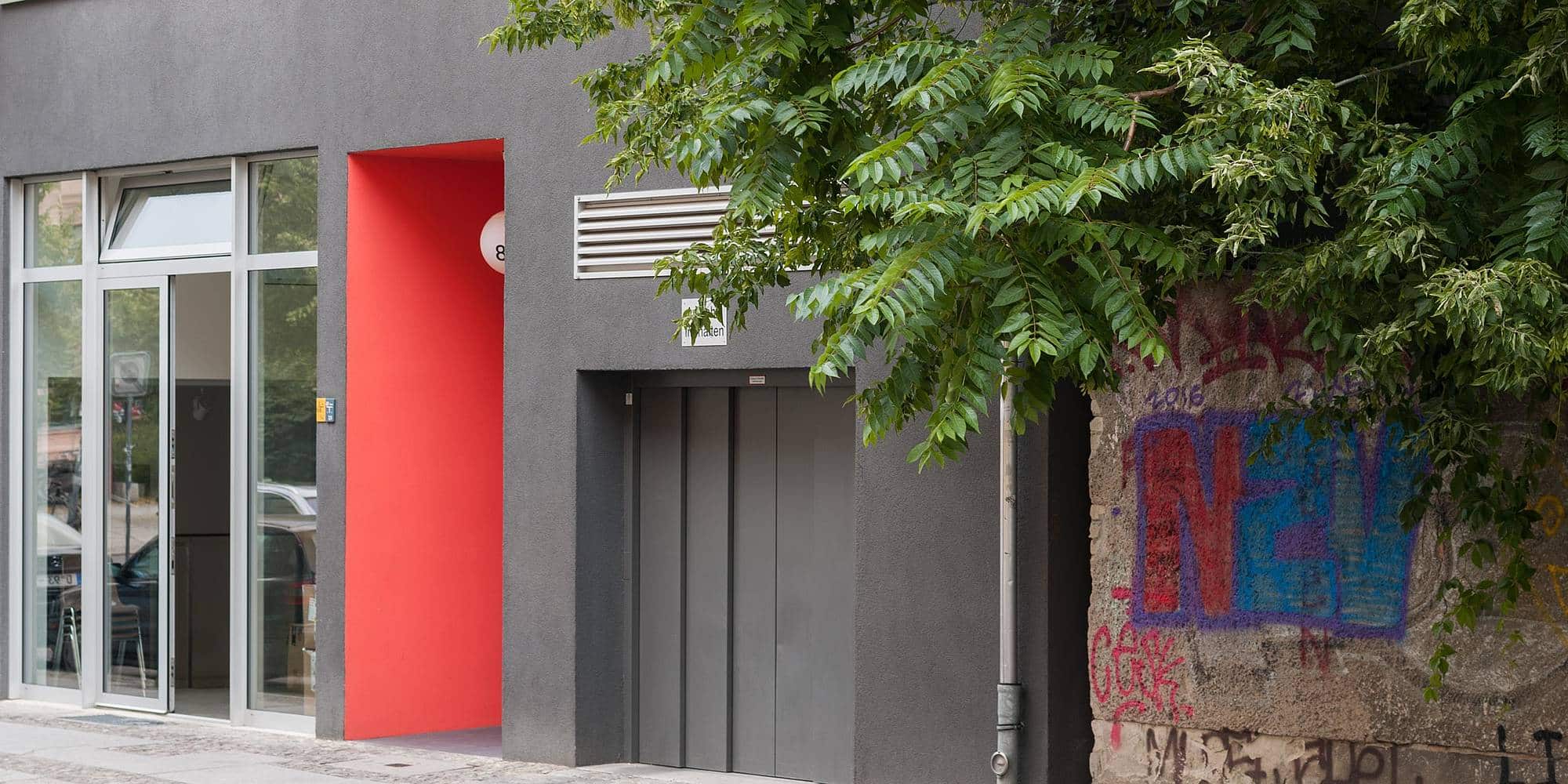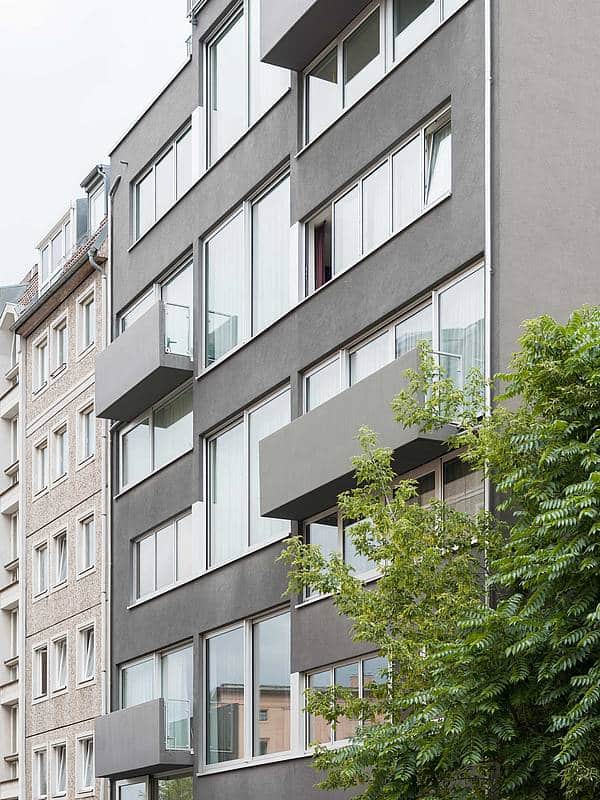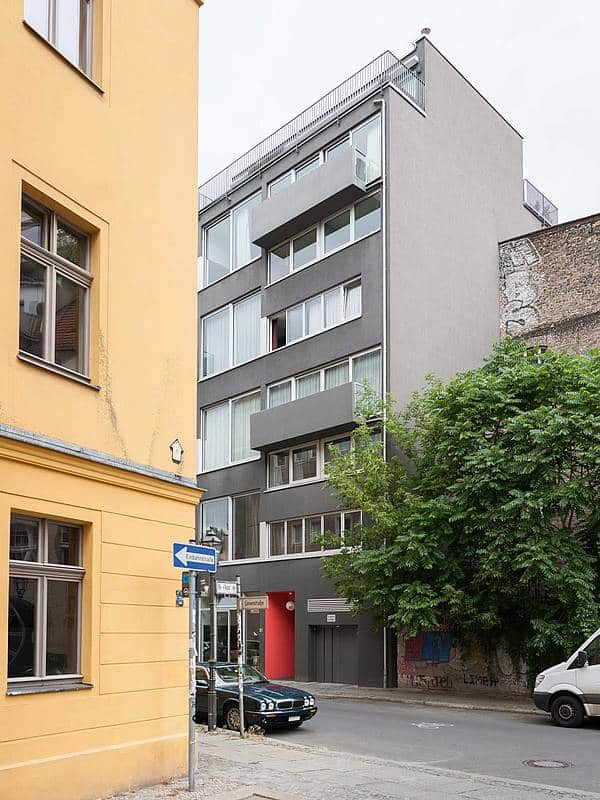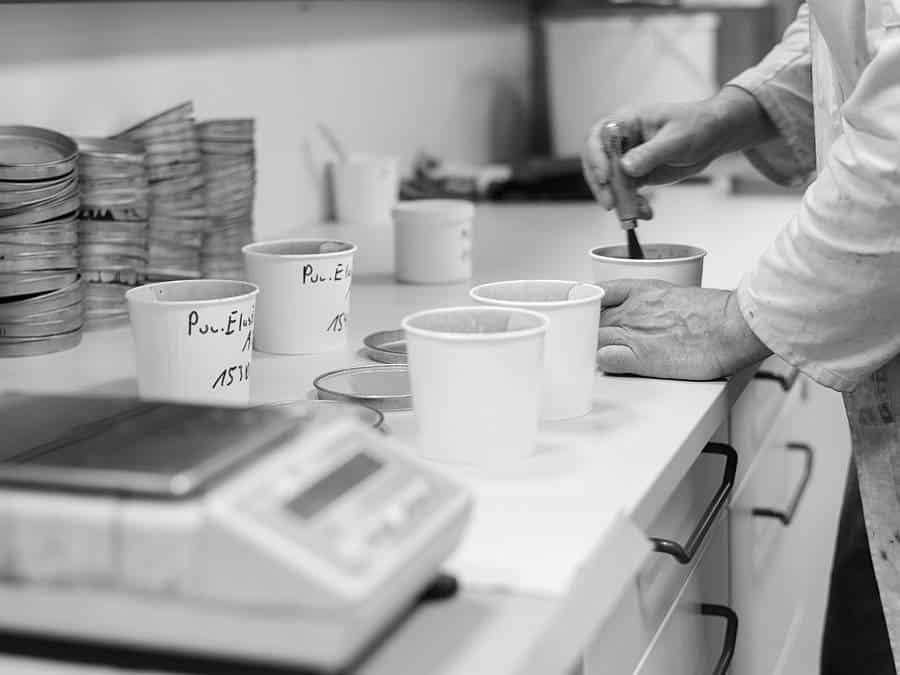
Stories
When the Façade is a Theme of its Own
The architecture firm zanderroth architekten was founded in Berlin in 1999. Sascha Zander and Christian Roth made a name for themselves with modern, innovative and yet great value construction, but they are using their unusual concepts to develop even tower blocks and public buildings such as schools. FORMLINER spoke with Christian Roth.
FORMLINER
You’ve planned and realized plenty of buildings in vacant lots in Berlin. What do you especially enjoy about these urban densification projects?
CHRISTIAN ROTH
The most exciting thing is the location. It always needs a different solution. The conditions are always different depending on the location: the neighboring buildings, roads or orientation.
FORMLINER
Berlin is growing. If the growth of the last few years continues, the capital will soon be home to four million people. There is a shortage of housing. The Senator for Urban Development, Andreas Geisel, recently said in an interview: “What we need now is a lot of volume in a short amount of time.” What do you think about that?
CHRISTIAN ROTH
He’s probably right. But I do see problems in how it’s currently being tackled. The building associations have been commissioned by the Senate to build a certain amount of apartments each year. But often, architecture and urban development are left behind. That’s a shame. Even if there’s a shortage of housing now, these new buildings will affect the city for a long time to come. It would be better to do this with care.

FORMLINER
How long can we carry on developing Berlin before adopting a different course and planning new estates and areas?
CHRISTIAN ROTH
There are actually lots of opportunities still, but it is heading further out. The most popular inner city areas are reaching their limits with regards to retrospective densification.
FORMLINER
As I was driving through Berlin to get to our interview and saw your buildings, I thought you must have a completely different view of the city.
CHRISTIAN ROTH
Yes, there are plenty of areas that could still be developed more. For example, the S-Bahn ring line. An interesting area, where the city starts to crumble away a little bit. And also other areas where building is more complicated but still possible.
FORMLINER
At Linienstraße 89 in Berlin-Mitte, one of your buildings stands next to a listed, dilapidated hospital in the shadow of a tower block. An exciting location.
CHRISTIAN ROTH
That was the special thing about the location that meant the client had to use the land in the best way. The task of combining as many square meters as possible with quality both inside and out was a huge challenge. The story height is just 2.6 meters in places. This wasn’t just to create space. We opted for a Tetris model: three-dimensional bodies that fit together.


FORMLINER
The elevator to the parking garage on Linienstraße is a bit similar to the contentious Carlofts in Berlin Kreuzberg, but when you look closer, it’s exactly the opposite.
CHRISTIAN ROTH
The elevator plays an important role in the development, but the difference is: Carlofts celebrates the car, which we find pretty absurd. For us, it’s just something you need to get around the city, a necessity. And actually, a problem that needs solving. In our building, cars live in the basement.
FORMLINER
You worked with formliners from Reckli for your building at Schönholzer Straße 11. Did they already have them or did you develop them together?
CHRISTIAN ROTH
They already had the template. RECKLI has a great catalog filled with endless different things. It was fun picking out the bamboo motif.
FORMLINER
Were there any alternatives?
CHRISTIAN ROTH
We definitely wanted something that reinforced the horizontal bands that run all the way around. That’s why we opted for this pattern. And funnily enough, there is a bamboo garden on the square opposite. It wasn’t us that planned that, it was a landscape architecture company that we work with.
FORMLINER
What kind of concrete did you use for the façade?
CHRISTIAN ROTH
Highly compacted concrete.
FORMLINER
Was it hard to work with?
CHRISTIAN ROTH
It was to start with, but then it was easy. There are certain things to take into account when working with highly technical concretes. We had six samples poured that all went wrong, and it took a while to work out what the problem was.
FORMLINER
What was the reason?
CHRISTIAN ROTH
Well, there was too much water in the concrete. There were still two or three liters of water in the mixer from the cleaning process. The mixture is very sensitive and even this small amount was too much. We hard to learn that the hard way. Then we involved a concrete technician on site, who monitored the samples and execution. Once we’d found that out, it was relatively easy.
FORMLINER
How do you work with the material?
CHRISTIAN ROTH
The formliners were simply glued to the frame, then the concrete was poured. The relief of horizontal bamboo canes is then printed into the concrete. The frame and the formliner could be used again.
FORMLINER
You tried out something new for a school in Schulzendorf in Brandenburg: it’s made from braided, treated willow that you designed with the help of a Bavarian basket weaver. How did you develop the façade together?
CHRISTIAN ROTH
The façade can be a whole new topic in projects like the school. The building wasn’t a complete new-build, it was an extension. There was already a block in the shape of an ‘H’ that we attached additional buildings to. The façade’s task was to create unity: join the old and new buildings together. It’s hard to say how that was done as a team. It’s often like that: someone has an idea at the beginning – and at the end, nobody knows exactly who it was. With the school project, the façade was allowed to become a theme of its own, which is sometimes difficult when building residential properties.
FORMLINER
Why?
CHRISTIAN ROTH
With residential buildings, it’s often the case that the building develops from the inside out. The structure is mostly dependent on the layout and cut. It can often happen that you’re standing in front of it at the end saying: Now it has to look good as well. But there’s one thing I find incredible …
FORMLINER
What?
CHRISTIAN ROTH
I realized that we’ve designed lots of concrete façades already, although this is almost exclusively due to costs when building housing. It’s great that you can use concrete to create façades that aren’t really expensive. You can design unusual but cheap façades in concrete.

